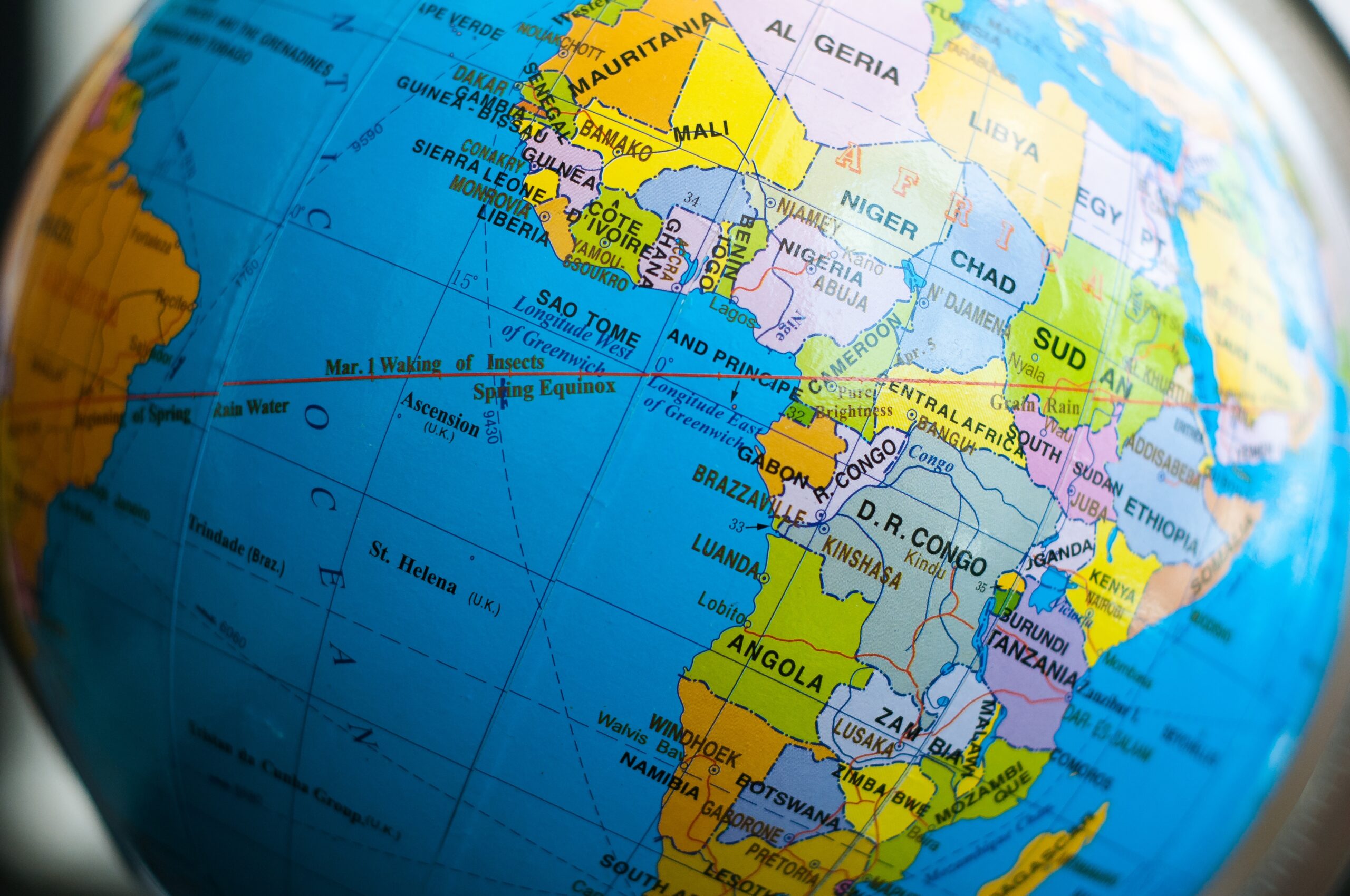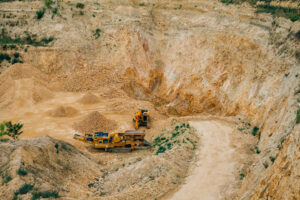Angola – Why ASX investors should put this southern African country on their watch list.
![]() Nick Sundich, December 4, 2024
Nick Sundich, December 4, 2024
Angola might just be one of the most important countries in Africa (if not the world), even if investors do not realise it yet.
Recently one of us was having coffee with a couple of Perth-based mining entrepreneurs. They were talking about what a land of opportunity Angola was turning into if you were looking for good projects. Where? You know… Angola, capital Luanda, population 37 million. ‘ Did you know Joe Biden’s going there soon?’, our Perth friends noted. ‘The only time as US President he’s been to sub-Saharan Africa. That’s how important Angola is’.
We decided to check out what’s happening in this southern African country and came away impressed. Investors looking for interesting Africa-focused resource plays ought to check it out.
If you’ve got a map of Africa in front of you, move your eye up from the Cape of Good Hope at the bottom left, past South Africa and Namibia on the western coast and there’s Angola, between Namibia in the south to the Democratic Republic of the Congo (DRC) in the north where that latter country slims down as the Congo River flows into the Atlantic.
 Source: Envato Stock image
Source: Envato Stock image
Like the DRC, Angola used to be a war-torn ‘heart of darkness’ country. If anyone knew anything about it, it was for the ‘blood diamonds’ that helped fuel a civil war.
Unscrambling Angola
Angola was a Portuguese colony until the Carnation Revolution of 1974 sent Portugal scrambling out of Africa. Then the fighting started between the communists from the MPLA and their anti-communist rivals UNITA. That kept going on and off until 2002, with Cuba and South Africa also involved for a while to back up their respective sides. Before that was done, up to 1.5 million lives may have been lost and 4 million people displaced. Not a few South African veterans of that war now live in Australia, which is one reason why most investors here would likely think of Angola as a risky place to do business.
That was then, however, and this is now. In 2002 the MPLA was the governing party of Angola and remains so today, but the country is a democracy with its most recent election being in 2022 and seeing UNITA win a lot of seats in the National Assembly. The MPLA has evolved into social democrats and their current leader, President Joao Lourenco, in office since 2017, has been a reformer seeking to reduce corruption and increasing transparency in government. Since the mid-2000s the country has gradually improved its level of economic freedom, according to the Heritage Foundation, rising from 43.5 points in 2006 to 54.3 in 2024.
Taxes are relatively light in Angola, with the top individual rate just 25%, the same as the top corporate rate. And the economy has been growing, driven by exports of diamonds, and, importantly, oil. Angola today is the world’s sixth-biggest diamond producer, with annual output of 8 or 9 million carats a year. The country has been a significant oil producer since the early 2000s as deepwater fields of the Lower Congo Basin have come on line and where production in 2020 was around 1.15 million barrels per day.
An important visit from Uncle Joe
Angola, however, isn’t just diamonds and oil. It’s got iron ore, copper, gold, phosphates, uranium, cobalt and lithium, among others. If you find anything, electricity costs to mine it are cheap because the country has so much hydro power. And Angola has an important friend in the US interested in developing this mineral potential. President Biden’s visit in December 2024 was to highlight his Administration’s support for the Lobito Corridor.
The Lobito Corridor is a 1,300 km railway project to connect the cobalt, lithium and copper mines in the DRC and Zambia with the Angolan port city of Lobito, 500 km to the south of Luanda. This massive piece of infrastructure covers the old colonial-era Benguela railway line, which was built between 1903 and 1929 but got wrecked in the civil war.
In November 2022, the Singapore-based commodity trader Trafigura signed a 30-year concession for the Lobito railway alongside the Portuguese engineering firm Mota-Engil and Vecturis, a Belgian rail and logistics company. The railway is currently operational but will get a major upgrade thanks to the Lobito initiative.
It will cost billions but its already got a lot of support from private investors, G7 governments, and the African Development Bank. The US commitment is something like US$1.6bn. And no wonder America in interested, since it helps push back against the Belt and Road initiatives that have caused mineral wealth in a lot of other African countries to fall into the Chinese orbit.
A country opening up to new investors
The Angolan government, keen to break its fiscal reliance on diamonds and oil, is working to make it easier to invest in the country, which is why Angola’s ‘Investment Attractiveness’ as per the annual Fraser Institute surveys, went from 37.1 points in 2022 to 52.5 points in 2023. These efforts, many of them part Angola’s National Development Plan up to 2027, are multi-faceted.
For example, in September 2023 it was announced that citizens from 90 countries, including Australia, could travel to Angola visa-free. Two months later, in November 2023, the Geological Institute of Angola signed a protocol with its American counterpart, the US Geological Survey, where the latter will support Angola in mapping its mineral resources. That’s important because something like 60% of the country has never been properly mapped.
Check out Angola, as others are doing
You know a country is on the investment map when the Canadian billionaire Robert Friedland shows up. Ivanhoe Mines is now looking for copper in Angola’s southeast in an area half the size of Switzerland. And other heavy hitters such as Anglo American and Rio Tinto are arriving too. Not to mention smaller companies. Lucapa Diamond (ASX: LOM) has been operating diamond mines in Angola for a while now, but the non-diamond players are active as well.
A UK company called Pensana plc (LSE: PRE), which used to be ASX-listed, has a rare earths deposit called Longonjo right next to the Lobito Corridor. That mine potentially commissions in 2025. Minbos Resources (ASX: MNB) just got an investment from the Angolan sovereign wealth fund to fully fund phase one construction of its Cabinda Phosphate Project, a project worth US$200m post-tax on a 10% discount rate in the 2022 DFS. Tyranna Resources (ASX: TYX) has its Namibe Lithium Project. We suspect there will be other explorers coming soon. Check it out.
What are the Best ASX Stocks to invest in right now?
Check our buy/sell tips
Blog Categories
Get Our Top 5 ASX Stocks for FY25
Recent Posts
Some ASX stocks could be hit by Trump Tariffs: Here are 6 in the Firing Line!
Trump Tariffs: They’re back with a vengeance and even worse than last time. During the first Trump administration, tariffs were…
Ramelius Resources (ASX:RMS): A $3bn gold miner, trading at a very cheap P/E
Ramelius Resources‘ (ASX:RMS) $3bn market cap may suggest it is expensive, but its P/E (7x for FY25 and 10.9x for…
Help: I own a delisted ASX company! What can I do?
If you own shares in a delisted ASX company, you’re probably wondering what to do. Some stocks have a happy…



